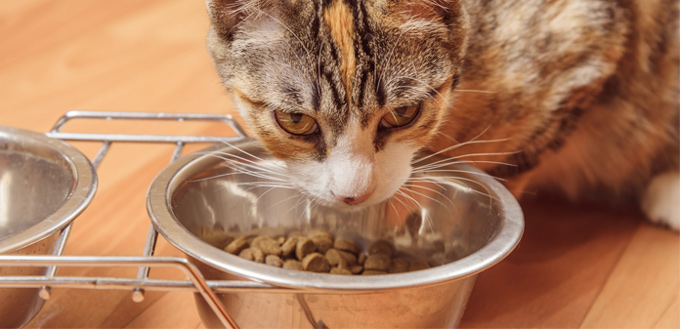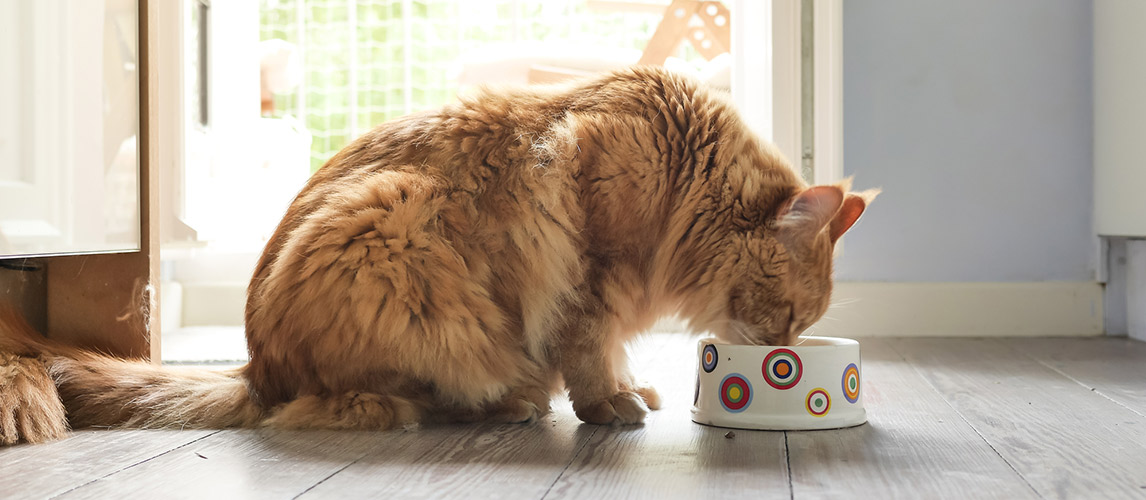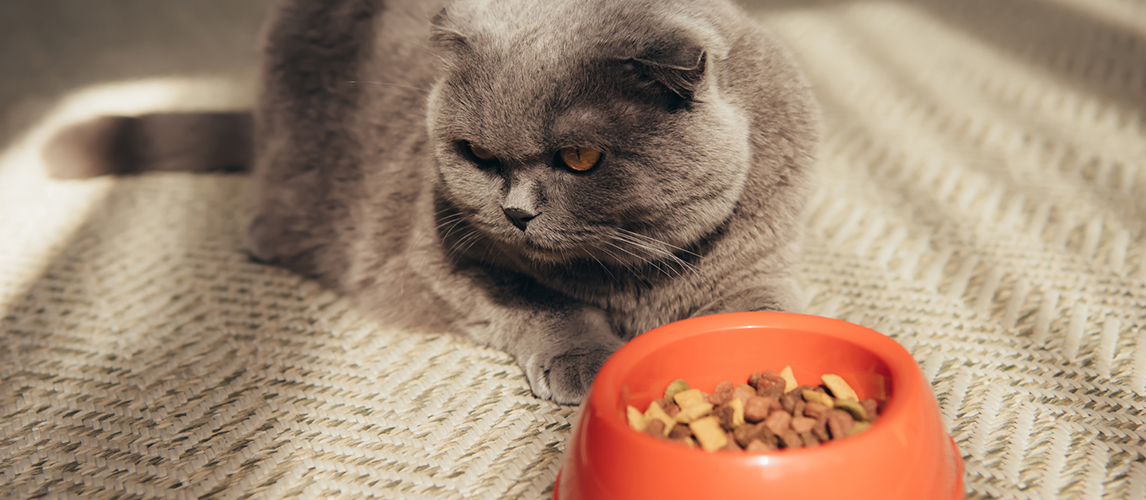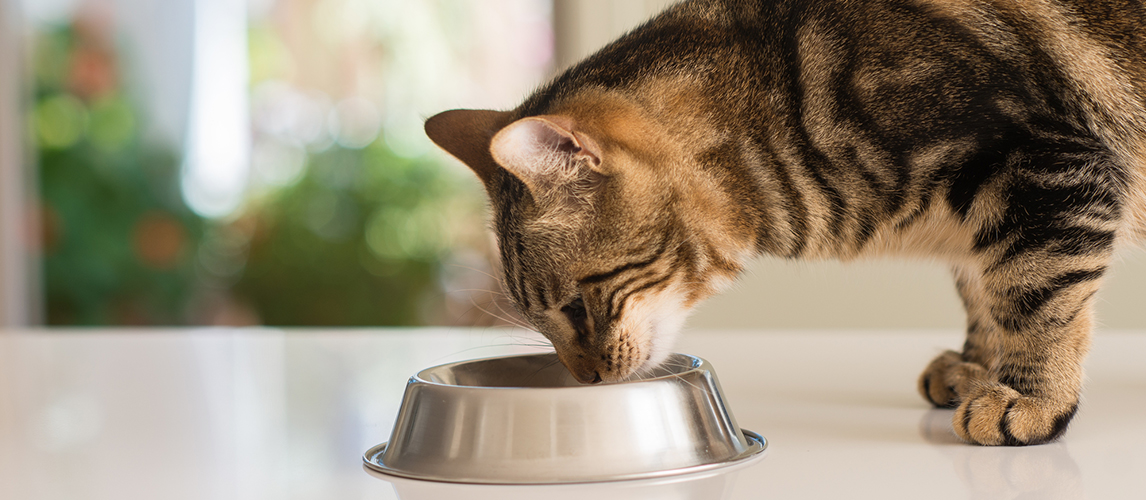Every cat owner wants the best for their pet. They want them to thrive in their environment and this requires them to have access to everything they need – food, water, shelter and companionship.
When it comes to food it can be difficult to know which is best for your cat. As well as choosing the best brand and flavor for your cat, you need to decide whether to feed them wet or dry food.
To make the right decision for your cat it is important to first explore their physiology in a little detail.

What Does Your Cat Need to Eat?
Cats are obligate carnivores. This means that, just like their wild cousins, on a biological level they must eat meat. To maintain optimal levels of health cats need muscle-based meats in their diet. More importantly, meat proteins should constitute the greater part of their diet. One of the reasons for this is because to thrive cats need the amino acid taurine, primarily found in the muscle meat of animals. Cats also use protein, rather than carbohydrates, to meet their blood glucose requirements. If their diet does not contain enough protein to maintain their glucose levels, and therefore their energy levels, their bodies begin to breakdown muscle tissue and organs to supply this need.
Plants are of course a source of protein as well, but plant-based diets can cause digestive problems for cats. This is because their digestive systems are not designed to break down the tough cellulose of plants. This is one of the reasons why many cat owners are choosing to go over to raw food diets for their furry friends. However, this is not always practical, so if you want to stick to store bought foods, then what should you look for?
What Should Cat Food Contain?
The best food for your cat is one that is high in meat based protein and low in plant cellulose. Any food you choose for your cat should have a good quality protein source as the top ingredient. Good sources of protein for cats include chicken, turkey and beef. Having fish as a main ingredient is also beneficial as it provides omega oils that are good for your cat’s joints and heart health.
It is important to differentiate between quality meat and meat by-products. By-products are not protein rich cuts, they are parts that are left behind once the muscle meat and other beneficial meats have been removed. By-products are considered filler and little else.
Other things to avoid where possible include artificial flavors, colors and preservatives, simply because these contain nothing beneficial to your cat, and could potentially be harmful. Gluten sources should also be avoided as they again provide no nutritional value to your cat and could cause digestive issues. Cats do not have the receptors needed for sweetness, so foods with a high fruit content are also of little value and are unlikely to be enjoyed by your cat.
To be labeled as balanced and complete by the Association of American Feed Control Officials (AAFCO) cat food must contain a minimum of 26% crude protein by weight. It does not stipulate the source of this protein. However, veterinarians recommend that cats have a diet containing at least 35% protein to maintain optimal health.
So, given this, is dry cat food or wet cat food most likely to meet the nutritional needs of your cat? And, what other aspects do you need to consider when choosing between wet and dry food?
Related Post: Best Water Bowl for Cats
The Benefits of Dry Cat Food
Convenience and cost are two of the main reasons that owners often choose dry cat food. Dry food lasts longer and can be left down all day for cats to graze at as they choose. Care should be taken with this approach to feeding as it can encourage obesity. The amount of food offered should be rationed in the same way as you would with wet food. You can always get an automatic cat feeder to help you with that.
Dry food also encourages chewing and slows digestion, which can be helpful if your cat has digestive issues. However, despite popular belief eating dried kibble does not improve dental health in cats. In fact, it could make matters worse by leaving a carbohydrate residue that encourages tartar and plaque to grow.
If your cat is on a dry food only diet, then it is probable that they are getting less of the nutrients they need than they would do from wet food. One of the reasons for this is because dry food by its very nature contains more fillers. This is in part due to the process of manufacturing the kibble.
Low-quality foods can have an even higher filler content, meaning that your cat is ingesting a high carbohydrate content than they need. In the wild a cat’s diet is unlikely to contain more than 5% carbohydrates. Low-grade foods can also lead to feline diabetes, so offering a food that meets the AAFCO standard is vital. Check out some of the best food options for diabetic cats.
Another potential problem with a dry food only diet is dehydration. Dry cat food can contain as little as 10% moisture. Prey consumed in the wild is about 70% water, so if your cat is on a dry diet, an ample supply of fresh drinking water is a must. If chronic dehydration does set in it can create health problems, including chronic renal failure.
The Benefits of Wet Cat Food
Given that there are so many potential issues with dry food, does this mean that wet cat food is the answer? Dehydration is much less likely with wet food as it contains an average of 78% water. This is a definite benefit for your cat and one less worry for you. However, you should still ensure they have access to fresh drinking water.
Any other benefits depend on the quality of the food that is being offered. For your cat to benefit from wet food it must have an animal protein source as its top ingredient. It should contain no gluten to reduce the risk of digestive problems and ideally should contain no by-products as these are little more than filler.
Related Post: Best Cat Water Fountains

The Lowdown – Which Food Wins?
While there are many benefits to a wet diet over a dry one, all these benefits are dependent on providing high-quality food. A low-quality wet food provides less of the nutrients that your cat needs than a high-quality dry food. Of course, you also need to take your cat’s preferences into account. Some cats prefer dry food, while others only eat wet food. If your cat prefers dry food, but you are concerned about the level of nutrients they are getting, then mix a high-quality wet food in with their dry.
Sources:
- Should I Feed Canned Or Dry Food?, The Clinical Nutrition Service
- Krista Williams, BSc, DVM, Dry, Canned, or Semi-Moist: Food Choices for Cats, VCA Hospitals
- Feeding Your Cat, Best Friends Animal Society






